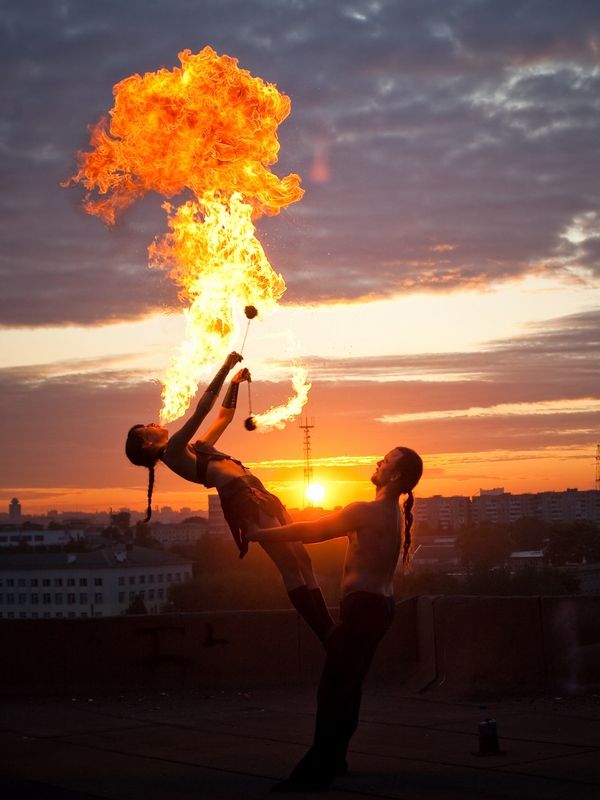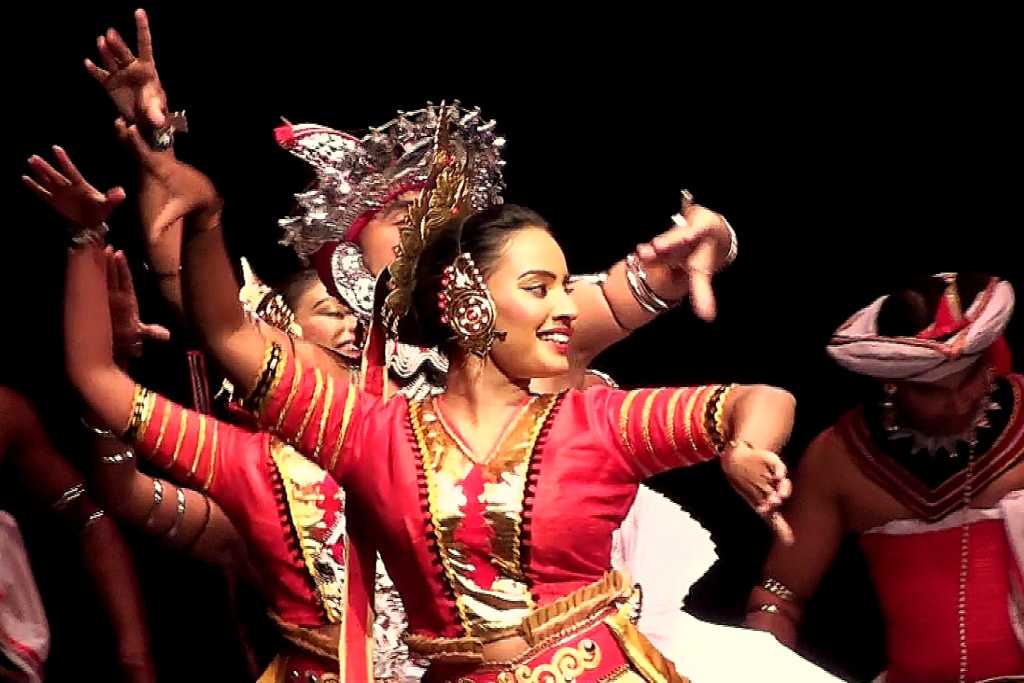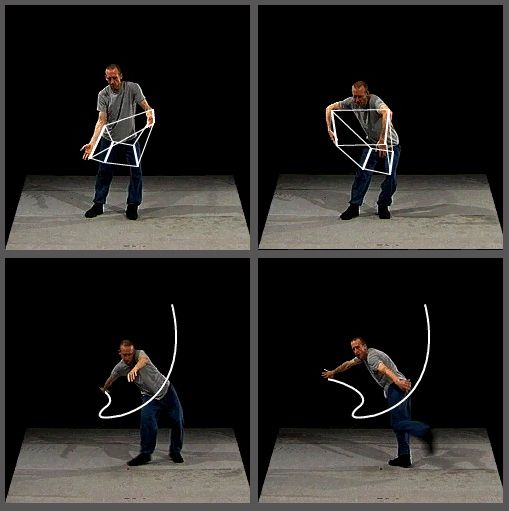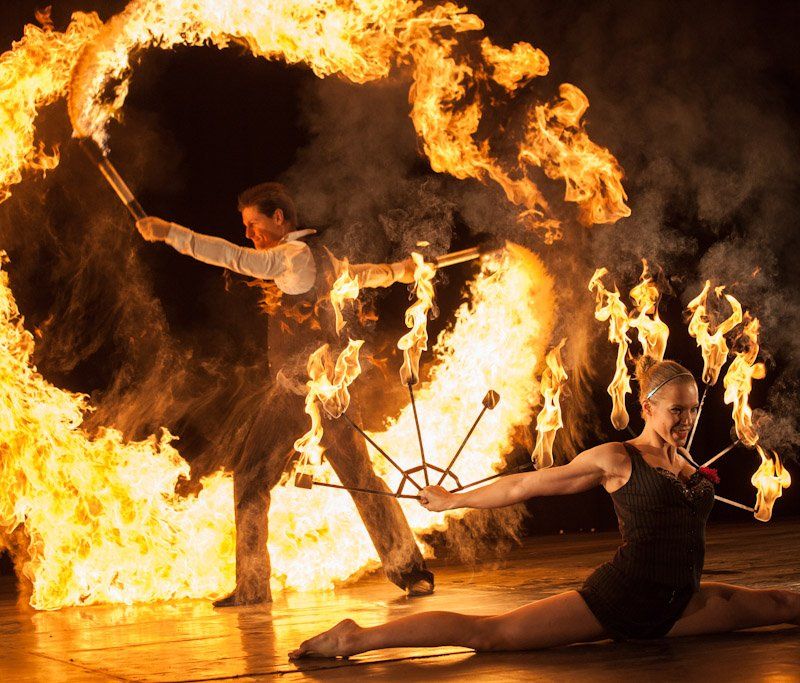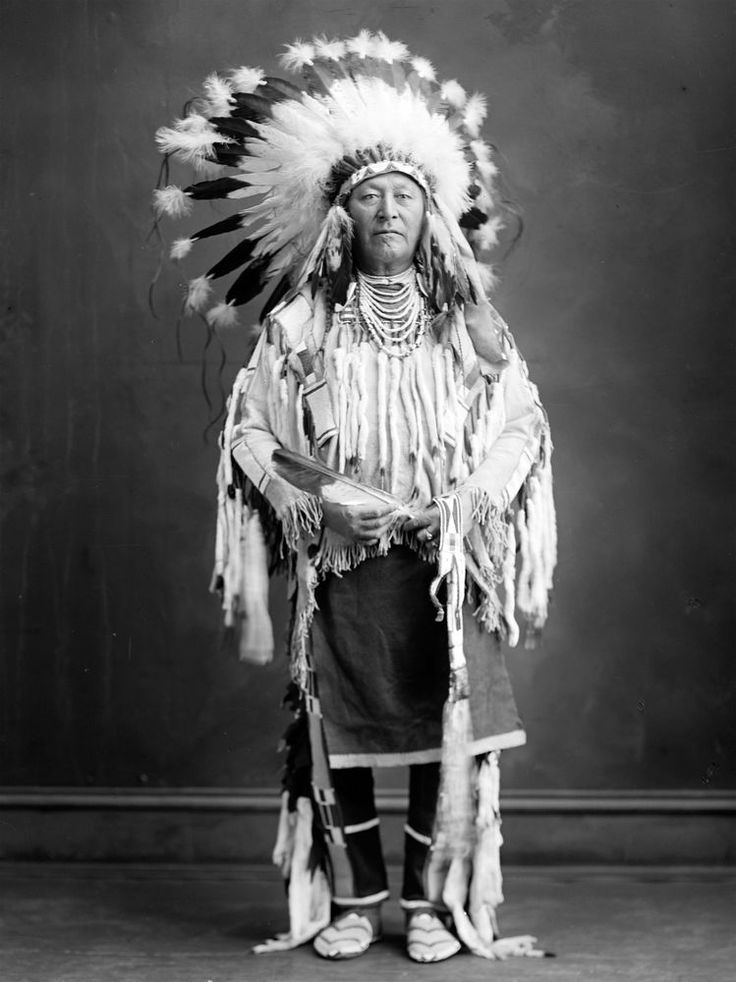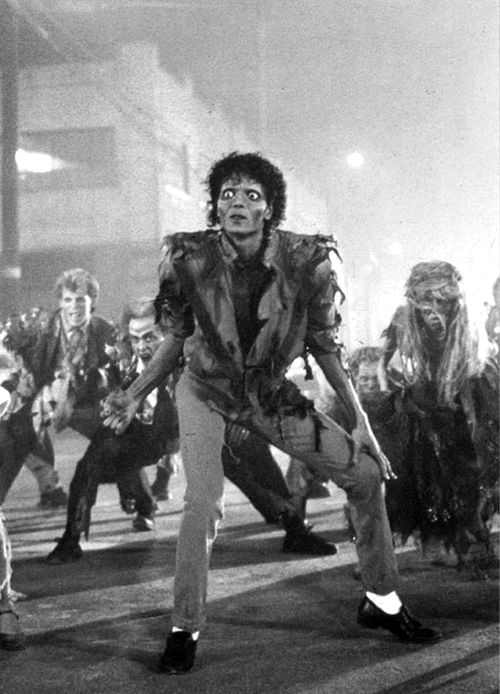How to create a dance choreography
10 Tips From the Pros
Creating movement from scratch to encompass the feeling, rhythm, and theme of a song takes a little imagination and some work, whether you're a beginner or getting ready for a big performance. When you're including the movements and dance phrases for multiple performers, too, choreographing a dance can get quite complicated. That's why we're giving you some top pro tips on how to choreograph a dance when you're feeling stuck, including methods you can use to step outside the box and spice up your routine.
1. Study the Music
If you know what music you want to choreograph your dance to, start studying. Go beyond creating movements based on the rhythm and beat of the song, and study the lyrics, the emotion, and the meaning behind the song. You can find inspiration from the feelings you get when you read the words, and embrace the emotion the artist puts into the song.
Poppin' C, a Swiss popping dancer, says, "The music is everything for me, because the way my body adapts and moves, is because of the way I feel the music. " By knowing every part of your music inside and out, you can design dance moves that really work with the beat and lyrics.
B-boy Junior holds a breaking workshop at Red Bull BC One Camp in Mumbai
© Ali Bharmal / Red Bull Content Pool
2. Watch the Pros
Take some time to watch dance-heavy musicals, like "Chicago" and "Anything Goes," competitive series like "World of Dance," and even street performers, like Logistx, to grab some inspiration for your moves. Observe the styles, transitions, and combinations of movements and note how pro dancers create a physical connection to the music. This can help motivate you to create dances that get the audience to connect with your physical interpretations of the music.
3. Plan for Audience and Venue
Think about who your performance or event is for. Consider the venue you're performing at, too, because your dance environment can help you find ways to creatively express emotion. Lighting, sound, and the overall ambiance of your venue can help you design dances that incorporate mood and emotion to connect with the audience during your performance.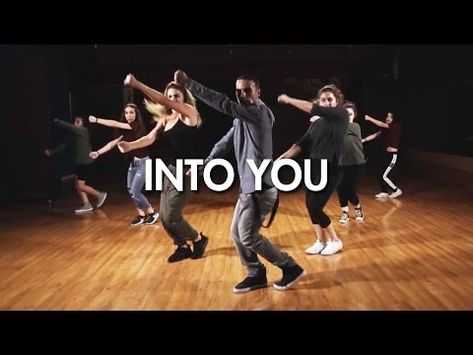
4. Think About Dance Style
Choreograph with steps and dance moves that reflect a specific style. You might try incorporating hip hop steps into a classical dance to mix it up and create your own unique dance style, for example. If you're just starting out with dance choreography, try focusing on learning how to balance a specific style of dance with your unique interpretation of the music you're dancing to.
Kid David poses for a portrait at Red Bull Dance Your Style USA Finals
© Carlo Cruz/Red Bull Content Pool
5. Focus on the Basic Elements
Focus on one (or several) of the most basic elements of dance: shape, form, space, time, and energy. For form, you can focus on designing phrases and steps based on a specific form from nature, like an animal or landform. Use your stage space to showcase explosive energy and give certain aspects of your performance a punch of emotion that keeps your audience engaged.
6. Don't Start at the Beginning
If you're stuck trying to figure out how to start your dance, plan it out from the middle or from the end.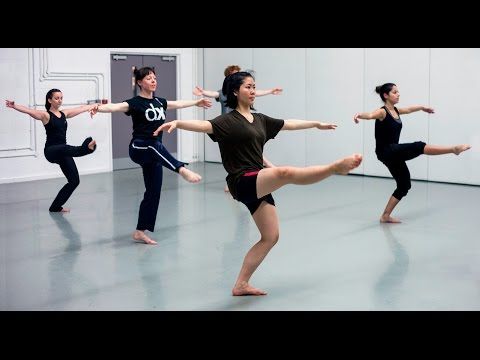 Tell a story through your dance choreography and plan out the climatic elements before the small steps to help you flesh out where you want to go with your ideas. Once you've outlined the basic structure of your choreography, piece it together into an entire work.
Tell a story through your dance choreography and plan out the climatic elements before the small steps to help you flesh out where you want to go with your ideas. Once you've outlined the basic structure of your choreography, piece it together into an entire work.
7. Try Choreographing Without Music
Dance in silence. It might seem like a crazy idea since you're choreographing the dance to a specific song. However, just letting your body move and flow with different tunes you imagine can help you step outside your comfort zone and incorporate challenging moves and dance steps that you might not have thought to pair with a song or score. When you discover something you like, pair it with other steps you've already developed and start fitting your moves to the music.
Poppin C shows off his moves during a photoshoot in Lausanne
© Torvioll Jashari / Red Bull Content Pool
8. Embrace Post-Modernism
Study early modern dance forms and styles that can get your imagination flowing.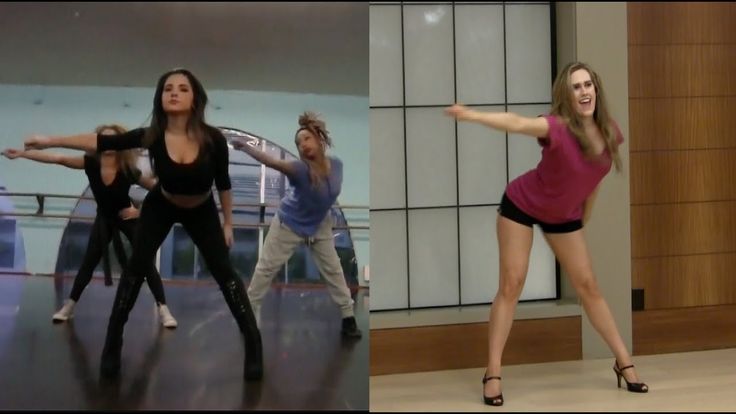 Dancers from the mid-century modern era through the 1950s and '60s (such as Anna Halprin, one of post-modern dance's pioneers) would incorporate a whole world of nontraditional moves in their choreography. Slow walking, vocals, and even common gestures can make imaginative additions to your overall work.
Dancers from the mid-century modern era through the 1950s and '60s (such as Anna Halprin, one of post-modern dance's pioneers) would incorporate a whole world of nontraditional moves in their choreography. Slow walking, vocals, and even common gestures can make imaginative additions to your overall work.
9. Incorporate the Classics
Use classical ballet, traditional ballroom steps, or other classic dance moves to mix up your style. It can be a startling transition for an audience to see a classical ballet step snapped in between freestyle phrases. Combining classical techniques with your dance design can add interest and suspense to your performances.
10. Use Other Art Forms as Inspiration
Don't just focus on music and dance. Look at all kinds of art forms, from two-dimensional paintings to live art performances. Take note of the different emotions and use of space, shapes, and forms that different artworks incorporate, and think about your interpretations and how you can convey that in movement. Use this as fuel for your inspiration when choreographing short phrases. Keep up to date on new forms of art to get inspired and avoid the dreaded writer's block (for dancers).
Use this as fuel for your inspiration when choreographing short phrases. Keep up to date on new forms of art to get inspired and avoid the dreaded writer's block (for dancers).
More Pro Tips to Choreograph a Dance
Arlene Phillips CBE, a British choreographer and theater director, got her start pro dancing and choreographing in the 1970s. She's been the choreographer for a variety of performances over the years, including live theater. Her advice for aspiring dancers includes some helpful choreographing tips:
Tell the music's story through your movements
Keep practicing with imaginative steps
Be determined to learn from your mistakes
Challenge yourself with unique rhythms, styles, and techniques
Plan out your most impactful elements then work in additional steps around those
Keep practicing your choreographing techniques
Don't be afraid to learn something new
One of the most important things to keep in mind when choreographing a dance, though, is to embrace diversity.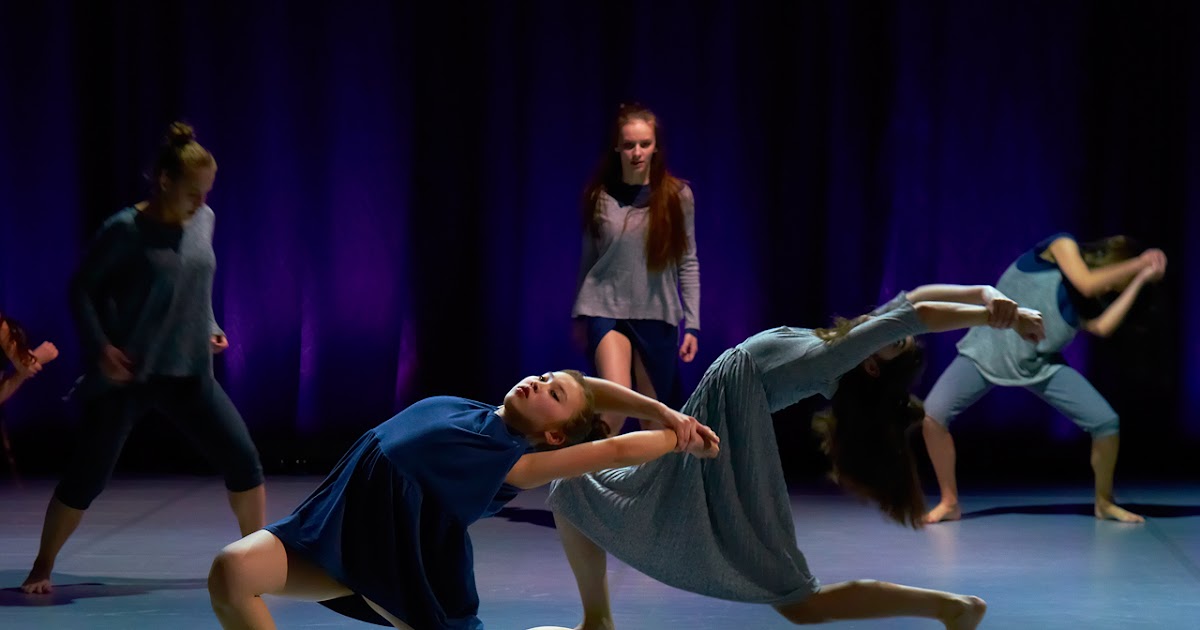 Don't be afraid to do something different or outside the norm. Try incorporating new styles or steps to make your dance fresh, and study all types of art to get excited about your work. The more you challenge yourself to think outside the box, the more creative and unique you can be with your choreography.
Don't be afraid to do something different or outside the norm. Try incorporating new styles or steps to make your dance fresh, and study all types of art to get excited about your work. The more you challenge yourself to think outside the box, the more creative and unique you can be with your choreography.
15 Ideas To Help You Make Amazing Dance Choreography
There's no formula for making a supa hot fire piece, but there are dance choreography tips and tricks you can use to help make the process a lot smoother.
Here are some 15 choreography tips that'll help you make the best piece you can!
1. Focus on one sectionHone in on the section that you can see that perfect move or combo and branch out from there.
Or, break up the choreography into pieces (known as 'chunking') and just choreograph a little bit every day.
2. Budget your timeGive yourself a set schedule to choreograph – like a full week with two hour intervals.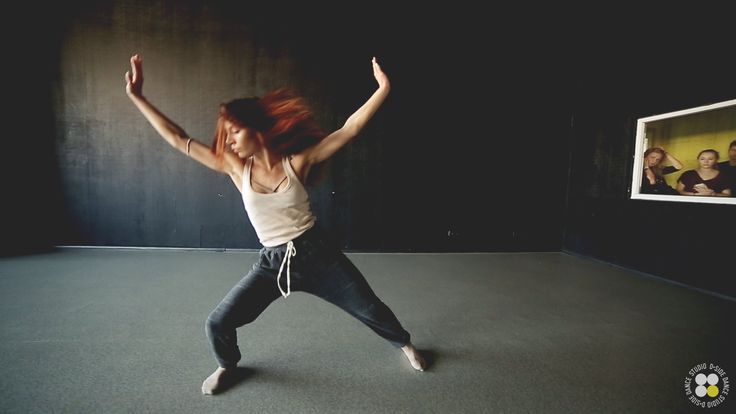
Don't just say "I'll choreograph later" every day and expect the piece to magically make itself.
3. Understand the music
Understand the song completely. The lyrics, meaning, beats, etc. I find myself stuck a lot when I would rush to choreograph to a song I barley listened to. But when I choreograph to a song that I connect with or know very well, my movements are more natural and carefree.
– Gina Hong
4. Do you
Be yourself! Don't focus on what's cool, but more on what feels good to you. The purpose of choreographing is to show your art and creativity.
– Devin Pornel
5. Collaborate with others
Working with other people to create a piece is one of my favorite things to do.You’ll be surprised by what you can learn from another person’s creative process.
– David Lee
6. Tell YOUR story
Don't choreograph to impress other people, do it to share a story. YOUR story.
– Tracy Seiler
7. Do weird moves
When you get stuck choreographing, try 'weird' moves- moves that make your body feel uncomfortable- or 'funny' moves- moves that help you get out of your head by just having fun with it. This allows your mind to create things that are new and creative. Keep changing up and that constant, somewhat dragging flow and you'll be surprised with what comes out of you.
– Michelle Shim
8. Be a character
What helps me most whenever I make a piece is I develop a character in my head. I give myself a reason, a motive, a feeling behind the piece.This will help you connect to the song and find some emotional attachment to your performance.
– Jaime Soriano
9. Trust yourself
Believe in your own abilities. Your very own, strictly organic, self-proclaimed abilities. A lot of us tend to have choreography blocks because we are investing too much time into what a piece should look like (based off of what we've seen from other choreographers), than what it should genuinely feel like.
– Mitch Villareal
10. Don't use videos as a reference
Watching videos is a great way to get inspired, but don’t just use them as a reference for moves.
Or else you'll just end up making a piece that's a patchwork of everyone else's choreo, rather than your own.
11. Dance to a different layer in the music
If you get stuck on the original pathway you were planning to follow, try highlighting a different layer in the music.
For example, forget the bass! What are the lyrics saying? How about the pitch?
Moving to different sounds will also help make your piece look more dynamic and less predictable.
12. Don't hit every single beat
Instead of moving to the most sounds, choose the right sounds. Be picky with the specific sound you want to follow.
You can groove through the rest or just have a moment in stillness, or milking the end of the last move.
Breathing through some sounds helps the audience (and your body) absorb a crazy sequence before or after that chill phase, and lifts some pressure off of the dance choreography process.
13. Utilize concepts to think of unique moves
Invent new moves based off of concepts. The potential for concept-based choreography is limitless, because your thoughts and ideas are limitless.
Just think of a word (or have someone give you one), and let that be your intention. You'll never run out of movement this way.
14. Take a break
Sometimes... the flow needs to pick up on its own. Instead of forcing it, take a break from your earphones and the mirror.
Do something else that'll refresh your mind and soul in a different way. Take a walk! Meditate! Watch a movie!
15. Watch this video when you hit choreo block
These 4 tips will help you get through that block!
We hope these dance choreography tips help! Can't wait to see the pieces you come up with.
Take class with your favorite choreographers to expand your vocabulary of movement and better understand how to piece moves together.
Sign up for STEEZY Studio and start learning!
Dance photography - the nuances of shooting, the secrets of success, polishing skills
Dance photography is an expression of the beauty of movement and emotions. Dance can be a source of great shots, but it's no secret that photographing dancers is very difficult: framing, focusing and releasing the shutter at the right moment - absolutely everything must be done, and at the same time with the best exposure in the available light. For Bernie Ng, one of Singapore's most prolific dance photographers, shooting choreography involves not only capturing the action, but also the aesthetics and emotion that permeates the movement. She shares some tips for capturing dramatic shots of dancers.
Dance can be a source of great shots, but it's no secret that photographing dancers is very difficult: framing, focusing and releasing the shutter at the right moment - absolutely everything must be done, and at the same time with the best exposure in the available light. For Bernie Ng, one of Singapore's most prolific dance photographers, shooting choreography involves not only capturing the action, but also the aesthetics and emotion that permeates the movement. She shares some tips for capturing dramatic shots of dancers.
EOS 5D Mark III / EF24-70mm f / 2.8L II USM / Manual exposure (f / 2.8, 1/250 s) / ISO 2500 / WB: Auto. "Pure" by T.H.E Dance Company (2016) / Choreography: Kuik Swee Boon / Dancers: Anthea Seah & Wu Mi
- Exposure
Getting the exposure right is probably the most difficult aspect of dance photography . Since flash photography is generally not allowed indoors, you should do your best with the available lighting, which will vary from one show to the next.
Use fast lenses
This will allow enough light to reach the camera sensor so you can keep the ISO sensitivity as low as possible to minimize visible noise. Ideally, your camera kit should include both a wide-angle lens for capturing the entire scene and a telephoto lens for close-ups.
Shoot in manual mode or use exposure compensation in Av or Tv mode
The action in the scene (and hence the shooting conditions) can change very quickly, so you'll need to keep control of your exposure settings. Bernie prefers to shoot in manual mode to fine-tune the camera. But if you choose to use semi-auto, she advises using compensation to get the right exposure.
For beginners, aperture-priority (Av) mode will probably be easier to use: you just need to set the maximum aperture and the camera will give you the fastest possible exposure without underexposure. Shutter priority mode (Tv) gives you control over shutter speed, but it can be a little more difficult for an inexperienced photographer to get an adequate exposure.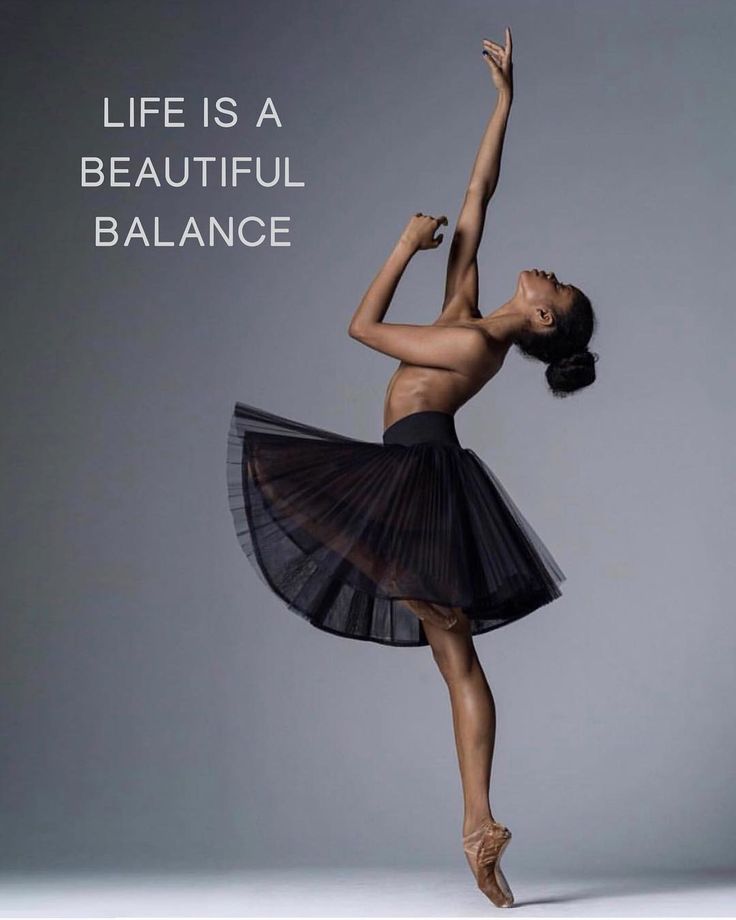
Shutter speed. Know what you need
Consider factors such as dance style, choreography, and the type of shoot you want. Bernie's shutter speed is 1/250 second, which she adjusts as needed. For example, she may decide to use a slow shutter if she feels it is necessary for the image.
EOS 5D Mark III / EF24-105mm f / 4L IS USM / Manual exposure (f / 4.0, 1/13 s) / ISO 800 / WB: Auto. "Giving" by Frontier Danceland (2015) / Choreography: Adrian Skjoldborg
Using a slow shutter speed can add momentum to a photo and bring the whole composition to life. In the shot above, you can see that the photographer chose to use a slow shutter speed to create some motion blur while keeping the dancer in focus. This filled in the empty spaces and added movement to the image.
Pro Tip: If you have access to a stage crew and lighting designer... about the upcoming show. Bernie usually asks what the lighting will be like.
Creative ideas: stroboscopic lighting can be a great opportunity!
EOS 5D Mark III / EF70-200mm f/4L IS USM / Manual exposure (f/4, 1.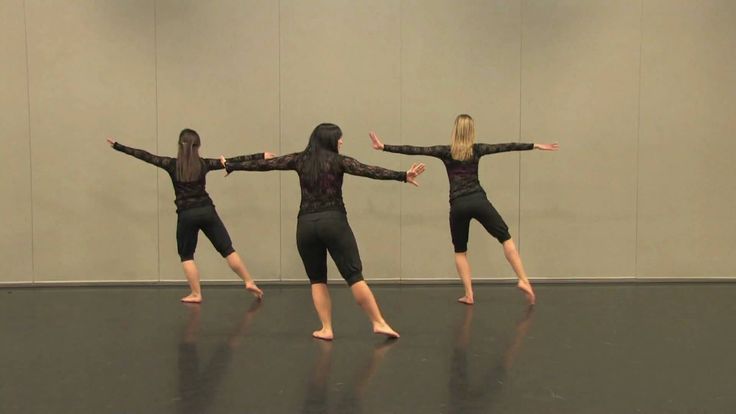 3s) / ISO 320 / WB: Auto. "Planet Romeo" / Presented at DiverCity as part of the M1 Contact Contemporary Dance Festival (2015) / Choreographer and Dancer: Daniel Kok
3s) / ISO 320 / WB: Auto. "Planet Romeo" / Presented at DiverCity as part of the M1 Contact Contemporary Dance Festival (2015) / Choreographer and Dancer: Daniel Kok
Some shows use stroboscopic lighting, which can cause you to miss many moments if you're not ready. However, if you prepare and react quickly enough, this can be an opportunity to get creative. For the shot you see above, Bernie made a quick decision to slow down the shutter and get a strobe effect.
- Dance is more than just action
EOS 5D Mark III / EF24-105mm f / 4L IS USM / Manual exposure (f / 4, 1/400 sec) / ISO 12800 / WB: Auto. "The Ordinary Man" by T.H.E Dance Company (2014) presented by Huayi - China Arts Festival, Esplanade - Theaters in the Bay / Choreography: Wu Yi-San & Kuik Swee Boon
A lot of people think about snapshots in a jump at the mention of dance photography, but quiet moments can be just as dramatic.
Your photography will definitely be influenced by:
- beautiful lines and correct poses
Find out which ones work well and which don't.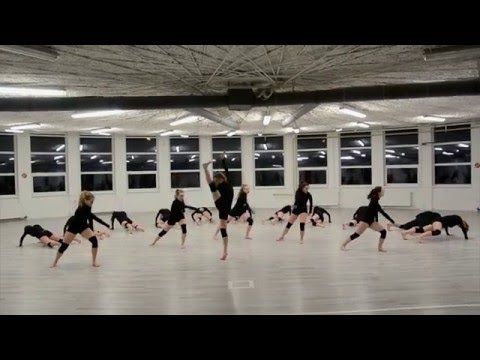 They can be different for different dance genres. However, you don't have to have a dance background to take decent shots - basically it all comes down to a well-developed sense of aesthetics. Make the dancers look good in the frame.
They can be different for different dance genres. However, you don't have to have a dance background to take decent shots - basically it all comes down to a well-developed sense of aesthetics. Make the dancers look good in the frame.
- dancers' faces
A big part of dance is conveying thoughts and feelings to the audience, so Bernie tries to capture the emotions and facial expressions of the performers. This is exactly the moment when it is useful to know what the choreography really is before you shoot! The intriguing facial expressions of the dancers above reflect the comedic nature of the choreography. Take those shots where the dancers blink or their eyes are empty and unfocused (unless it's part of the choreography) and mercilessly throw them in the trash.
Pro Tip: Be sensitive to the shots you take
Remember that your camera can capture things that the human eye cannot see: pressing the shutter button will inevitably take pictures that may not be the most flattering for dancers.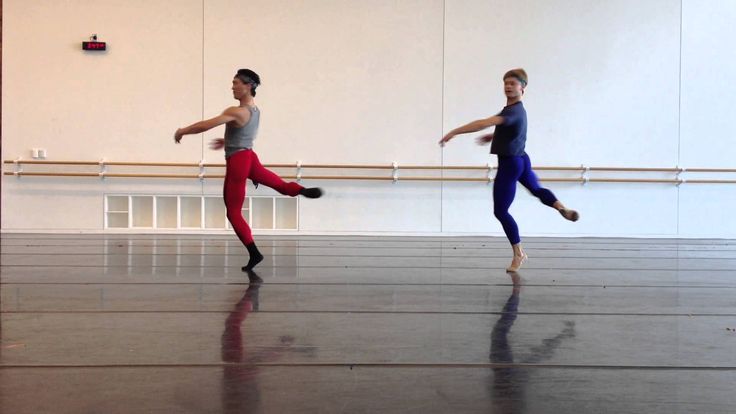 Be very careful and careful when choosing the final set of shots (if you are an invited photographer and completed an order). Get permission from a particular dancer or company if necessary, especially if you share images on social media, a website, or wherever.
Be very careful and careful when choosing the final set of shots (if you are an invited photographer and completed an order). Get permission from a particular dancer or company if necessary, especially if you share images on social media, a website, or wherever.
Dance photos don't have to include the entire body of the dancer!
EOS 5D Mark III / EF24-70mm f/2.8L II USM / Manual exposure (f/2.8, 1/100s) / ISO 400 / WB: Auto. Pallavi in Time by Chowk Productions (2017) / Choreography: Raka Maitra
Close-ups of the dancers' faces or other details of the mise-en-scene can also create memorable shots.
"The legs were very important to this choreography," Bernie recalls of the picture above. She wanted to get closer to the ankle bracelets of the dancers. The photo turned out to be successful also because the lighting was also focused on the legs.
Bonus: if you really want to capture the jump…
EOS 5D Mark III / EF24-105mm f / 4L IS USM / Manual exposure (f / 4, 1/250 sec) / ISO 5000 / WB : Auto.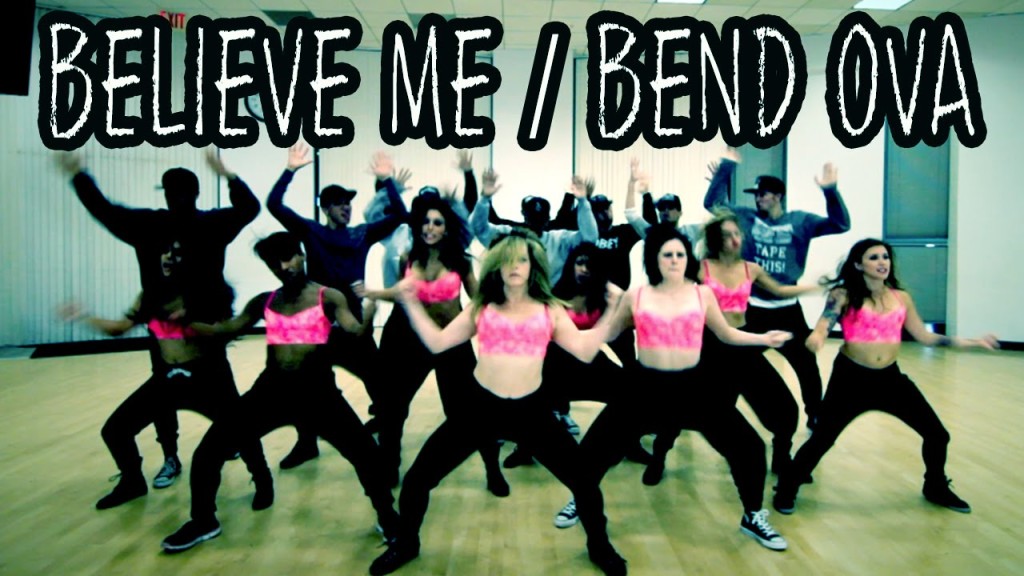 "Schubert Symphony" Singapore Dance Theater (2016) / Choreography: Chu-San-Go
"Schubert Symphony" Singapore Dance Theater (2016) / Choreography: Chu-San-Go
The most important thing in pictures of dancers in a jump is the exact time: "If you see a jump, you are already too late." To get the timing right, the photographer advises not to rely too much on continuous shooting. Instead, learn when to press the shutter button. Sometimes you can tell from the music at what point the dancers are getting ready to jump. It will probably take a lot of trial and error, but it will only improve your photography skills.
Other noteworthy parts
- You will need to react very quickly.
As mentioned above, things obviously move quickly on stage and you have to anticipate the moments and react almost instinctively to get the shots you want. What will help?
- - The presence of a fast and "responsive" camera.
- - Good knowledge of the functions of your camera and its configuration at the level of intuition.
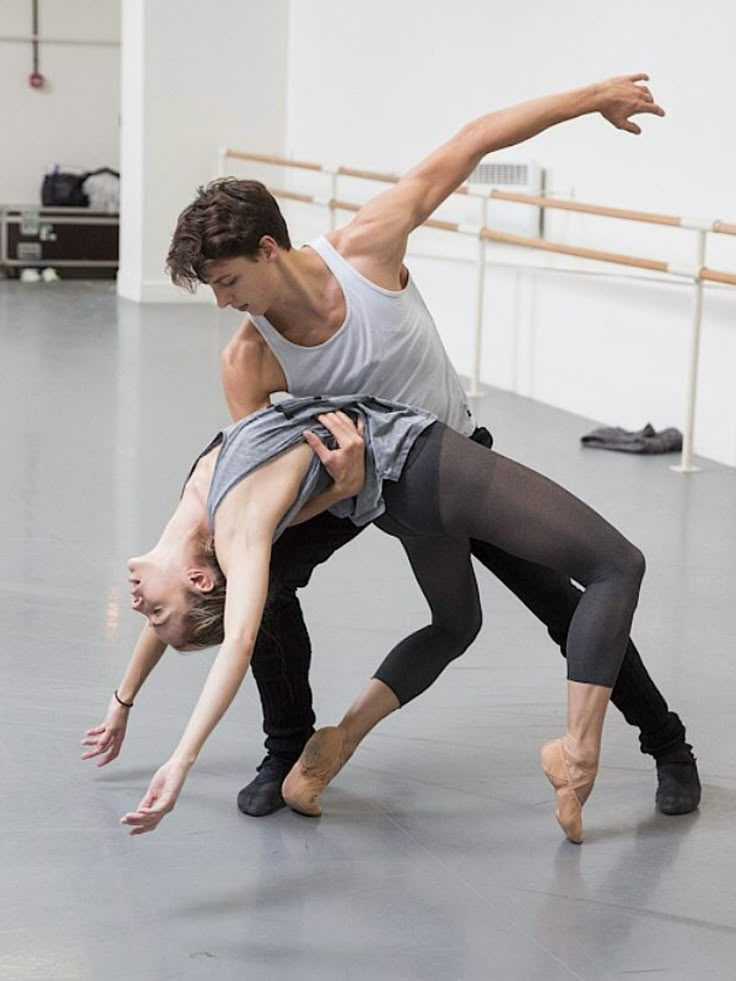 Customize your own shortcut buttons.
Customize your own shortcut buttons. - - If you focus with the back button. This makes shooting more efficient because you don't have to refocus every time you press the shutter button.
- - A lot of practice helps you think faster.
- - If you watch a lot of dancing, even outside of filming. This will help you familiarize yourself with the timing of the shutter release and aesthetics. In addition, it is easier to evaluate the dance when you see it with your own eyes, and not through the lens!
- Respect who is on stage and respect the audience.
It's easy to get carried away here, but be aware of both the audience and the dancers on stage.
YES!
- - Take pictures only when allowed.
- - Turn off red light autofocus.
- - Turn off your flash.
NOT…
- - Get too close to the dancers. This can be quite distracting if you (or your huge telephoto lens) intrude into their space, especially since they will have heightened spatial awareness as they dance.
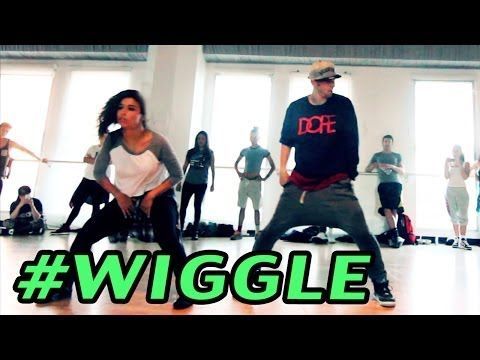
- - Make it difficult for the audience to see.
- Last but not least, respect the dancers.
The dancers work very hard to perfect their art, and without them you wouldn't have your photos.
- - Think about how they would like to look in the frame. Show them in the best light, and make their efforts worthwhile.
- - Never forget to credit the dancers and choreographers on your photos when you post them on your social media profile.
- - Create your connection to your object. Watch more dances or even take choreography classes! Your increasing appreciation of your subject may be reflected in the pictures you take.
The career of dancers is short. Your photographs of performing on stage in the dance element may be the only record of these precious moments, so try to take pictures that will bring joy to people and bring back fond memories.
Choreographic Association "Dance"
Dance Association was founded in 1999. The team became a multiple laureate and diploma winner of various dance competitions. Children begin to study from an early age (from 3.5 years old) at the preparatory (paid) department of "Dance", from where students move to the budgetary groups of the "Dance Choreographic Association", starting from school age.
The team became a multiple laureate and diploma winner of various dance competitions. Children begin to study from an early age (from 3.5 years old) at the preparatory (paid) department of "Dance", from where students move to the budgetary groups of the "Dance Choreographic Association", starting from school age.
However, we also welcome those who come to us even without special training and at an older age. And if you have the preparation, then we will invite you to the group of the appropriate level of dance skills.
EDUCATIONAL PROGRAM
The choreographic association "Dance" works on the following programs: "Beginning", "First Steps", "Exercise".
The First Steps program
has an artistic orientation and a general cultural level of development.
Under the program "First Steps" - I teach children to take the first step into the dance life. This program allows the child to understand what dance is, to get in touch with the joys and difficulties of dance mastery and decide for themselves what the future path will be in this complex dance world. The program is designed for 2 years. Implemented for students from 6 (schoolchildren) to 9years, boys and girls showing interest in choreographic art. Children master the following disciplines: rhythm, staging and rehearsal activities.
This program allows the child to understand what dance is, to get in touch with the joys and difficulties of dance mastery and decide for themselves what the future path will be in this complex dance world. The program is designed for 2 years. Implemented for students from 6 (schoolchildren) to 9years, boys and girls showing interest in choreographic art. Children master the following disciplines: rhythm, staging and rehearsal activities.
Having mastered the "First Steps" program, the child will be able to choose the dance direction in which he wants to improve in the future. If the results of mastering the program are high, and the desire to continue practicing is strong, then the young dancer will be transferred to the next group and continue training under the Exercise program.
The Beginning program
is for children gifted in choreography.
Has an artistic orientation and a basic level of development.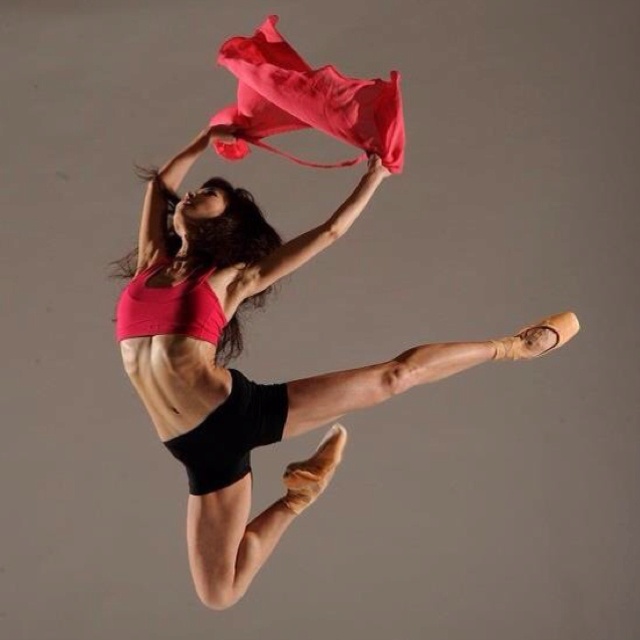
Implemented for students from 6 (schoolchildren) to 9 years old, boys and girls.
This program is for children who want to connect their lives with dancing. Within 2 years we improve the student's ballet data, develop rhythmic abilities, coordination, dance technique. In the training program: rhythmics, parterre gymnastics (exercises on the floor, giving preparation for learning classical dance), children's dance.
Students in this program have high requirements for performance skills. Students not only study in the classroom, attend a master class of leading experts in the field of choreography, but also actively participate in the concert and competitive activities of the group. Upon completion of training under this program, children are enrolled in a group that is engaged in the "Exercise" program.
The Exercise program
has an artistic orientation and an advanced level of development.
This program accepts children from the age of 8 who have basic choreographic training (according to the Beginning and First Steps programs, or who have the necessary skills and have passed the preliminary selection). The implementation period is 5 years. The Exercise program is aimed at mastering classical, folk, folk stage dances. Children studying under this program participate in a variety of concert and competitive activities of the group. Learn acting and make-up techniques. Learn the basic rules for staging dance numbers. They actively attend master classes of leading experts in the field of choreography. Graduates continue their studies in colleges and universities in the choreographic profile.
The implementation period is 5 years. The Exercise program is aimed at mastering classical, folk, folk stage dances. Children studying under this program participate in a variety of concert and competitive activities of the group. Learn acting and make-up techniques. Learn the basic rules for staging dance numbers. They actively attend master classes of leading experts in the field of choreography. Graduates continue their studies in colleges and universities in the choreographic profile.
______________________________________________________________________________
“..In order not to break down in the knowledge of dance art, you must first fall in love with dance…”
will master both the initial rhythmic training, and gymnastic exercises, and classical dance, and folk, and elements of children's and variety dances. If these terms do not mean much to you, then I will try to orient you in the complex world of dance styles:
- Rhythm is the first step in dance learning.
 In these lessons we will study the rhythmic pattern of music, develop the ability to move in the right rhythm. Learn elementary dance skills (the simplest dance elements), develop ballet skills (stretching, flexibility).
In these lessons we will study the rhythmic pattern of music, develop the ability to move in the right rhythm. Learn elementary dance skills (the simplest dance elements), develop ballet skills (stretching, flexibility). - Gymnastics is a mandatory set of exercises that allows you to prepare the body of the future dancer and dancer for more complex dance movements.
- Children's dance is a choreography for children and about children. These are the same children's dances that you want to see at primary school age, for example, the dance of gnomes, the dance of flowers, the dance of crumbs, the dance of dolls.
- Classical Dance is an ABC to help students understand and control their bodies. These are classes at the ballet barre and in the middle of the hall ... (Do you remember the ballet "Swan Lake" and "Giselle"? This is classical dance).
- Folk dance is a barre and middle class based on classical dance exercises, but in a folk style.
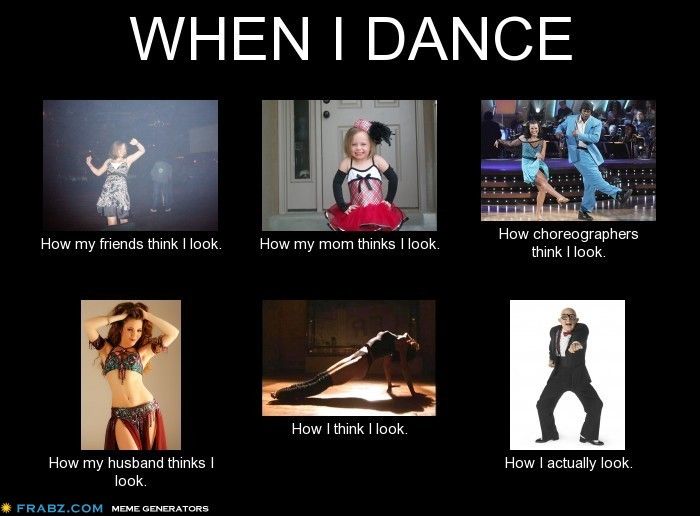 (Ensembles "Birch", "Gzhel", Moiseev's ensemble).
(Ensembles "Birch", "Gzhel", Moiseev's ensemble). - Modern pop directions are the dances that we see in concerts of pop performers, in musicals, at competitions, etc. (The show ballet "Todes" works in this style).
Everyone will dance, but the best students are invited to join the ensemble! And then you will know the life of real artists! It is very honorable and fun, but very responsible and not easy! Many rehearsals and performances are waiting for those who get into the ensemble! These are performances at various venues in St. Petersburg and beyond, participation in competitions and festivals. In concerts of various levels in costumes and make-up! Students of the choreographic association "Dance" have a decent training and can continue their education in specialized dance colleges and universities.
INFORMATION ABOUT THE TEACHER
Zwinger Victoria Alexandrovna
Viktoria Alexandrovna Zwinger, head of the choreographic associations "Dance" and "Tantsulechki".
Brought up on the traditions of the Leningrad Choreographic School. A.Ya. Vaganova, St. Petersburg Theater Academy. Cherkasov (acting department, diploma with honors) and the Humanitarian University of Trade Unions (folk choreography, diploma with honors). The teachers of Victoria Alexandrovna Zwinger were People's Artist of the RSFSR A.Yu. Tolubeev, Honored Worker of Culture of the Russian Federation, laureate of the Prize of the Government of the Russian Federation "Soul of Russia", artistic director of the folk group "Rossiyanochka" A.L. Nosikhin, A.V. Chernozemov, Professor of the Department of Scenes. movements of A.P. Olevanov, Professor of the Department of Choreographic Art, People's Artist of Buryatia, Laureate of the State Prize O.V. Ignatiev, Yu.A. Stadnik, T.P. Gradova, G.S. Vulikh, N.N. other wonderful teachers who managed to teach me not only to love the performing arts, but also to pass this love on to children.
I believe that it is very important – “not to discourage the desire to dance!”, but it is also important “to be able to cultivate the will to win!”.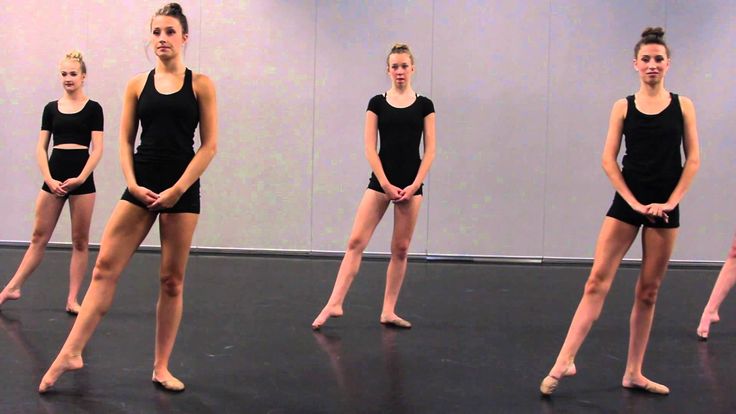
OUR ACCOUNTER
Amazing kind, sympathetic and highly professional accompanist Daiyana Vitalievna Bakaeva, a graduate of the Russian State Pedagogical University. Herzen (performing faculty, piano).
0009
During the academic year:
- We give master classes by well-known teachers of various dance styles
- Dance routines are choreographed by professional choreographers
- We do photo shoots
- We give open lessons for parents
- and draw the line with an examination session, where students are evaluated by invited leaders and teachers of other choreographic associations (ensembles), actors, musicians ...
- And we say goodbye until the next school year with a solemn and cheerful party, where students are rewarded, contests and dances.
WE ARE WAITING FOR YOU IN OUR FRIENDLY TEAM! AND MAYBE IT'S YOU WE MISS!
Enrollment begins at the end of August, and classes from September 10! We are engaged in the house of children's creativity "Olimp" at the address: Roadside alley, 17 letter A and on the basis of school No.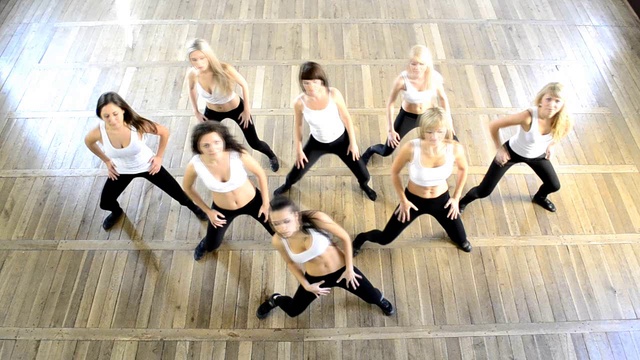 76 at Bolotnaya st., 18. If you have any questions, you can ask them by phone: DDT "Olimp" 599-39-00, or 8-921-312-95-94 (head).
76 at Bolotnaya st., 18. If you have any questions, you can ask them by phone: DDT "Olimp" 599-39-00, or 8-921-312-95-94 (head).
You can get more detailed information about the choreographic association "Dance" at the following links:
http://vk.com/club1
29
http://vk.com/club39514645
Our website: http:/ /horeograf-tanec.ru/
Film about us ->
OUR DANCE NUMBERS
| Lullaby for Mom Mothers and daughters fall asleep together and find themselves in a land of dreams... All fabulous wishes, all magical dreams, all maternal tenderness and love are expressed in this issue... Issued in 2017. Zwinger V.A. |
| Caprices and Dreams Fantasies go everywhere... By what methods we just do not achieve the fulfillment of our will. Issued in 2017. Zwinger V.A. |
| Girls' Fun The issue tells how girls in Rus' had fun... The number was created in 2016. Directed by Zwinger V.A. |
| Down the valley The entire beauty of the Russian dance of the Smolensk region will be revealed by the composition "Along the Valley". Originally folk music and ethnic costumes will emphasize the originality of the room. This number was staged in 2016 by Aleksey Pavlovich Shyshkin, Associate Professor, Honored Worker of Culture of South Ossetia, Head of the Folk Dance Department of the Samara State Academy of Arts, Head and Chief Ballet Master of the Volga Patterns Ensemble.
|
|
"Russian dance" This solo number is created in the style of Russian folk dance. |
| "Mystery Story" Remember the story about Pinocchio. We tried to talk about how the puppets actually learn the secrets, and what happens then... Performed by "Dancers" (preparatory department) Children 5-6 years old. Number delivered in 2015. |
| "Russian souvenir" The beauty of Russia is boundless. It is also expressed in folk crafts, songs, dances and music. We wanted to show the beauty and diversity of folk culture, both dance and visual. The number is performed in the Russian folk dance style. The number was created in 2015. |
| Happy Clown This is the story of a restless, cheerful and snooty little clown who is so charming that even offensive antics are forgiven for him. |
| Sunbeam A bright solo number that tells about the adventures of a sunbeam. The number is performed by almost a real sunbeam. Valeria Sarafannikova is only 4 years old, and she feels confident on stage. The number appeared in 2016. |
| Doll Story And again, our crumbs are talking about their favorite tumbler dolls. What are these dolls and how do they differ from others... The number was created in 2014. |
| "Oh, you Porushka, Paranya" The performance is performed by the youngest artists of the group.. preschoolers. The number was created in the manner of Russian stylization and captivates with its simplicity and sincerity |
| "Mexican dance" Cheerful Mexican dance that emphasizes the brightest features of the perky character of Mexico. |
|
Goodbye Girls"Goodbye, girls" - this number is dedicated to the 70th anniversary of the Victory. To the music of Bulat Okudzhava, we created a performance about how we met the war, said goodbye to our relatives and went to the front, our girls, someone's sisters, someone's daughters ... We tried to convey all the pain experienced by the girls going to the front and those who remained ... |
|
Bluebird "Blue Bird" - continues to conquer the scenes of St. Petersburg and the Leningrad region. The solo number created in the manner of classical dance continues to decorate the repertoire of our ensemble. This year, she was awarded the title of laureate of the III degree at the III open inter-municipal choreographic festival-competition "Dance Confetti-20I4", laureate of the I degree of the IV International Festival of Contemporary Choreographic Art "Northern Capital", laureate of the I degree of the city dance competition "Rhythms of St. |
|
Horses"Horses" - sketch number. Previously, we called this number "Sketches of Russian life", but in the process of evolution, the number was renamed and it became known as "horses". This number won the title of laureate of the 1st degree of the international choreographic competition-festival "Petersburg Seasons", a diploma of the 3rd degree of the IV Interregional Festival of Contemporary Choreographic Art "ProDanceSPb". |
|
Whispering Fly "The Fly-Cuzzle" - a solo number, staged based on the fairy tale by K.I. Chukovsky. The plot is simple: Fly-Tsokotuha is preparing for the holiday. The samovar is already prepared, it remains to wait for your guests. |
|
Cabbage "Cabbage" - this number was created in this (2014-15) school year. The true folk dance, performed since ancient times in Rus' “Veysya cabbage”, was taken as the basis. Its second name is "Wattle". The difference in names is due to the area in which it was performed. |
|
Russian! "Russian!" - This provocative Russian number has been danced for the third year, but this year we have significantly changed the composition of the participants and complicated the choreography. This number was one of the most beloved in our repertoire. He fell in love not only with the participants, but also with our dear viewers. No wonder this year this number was highly appreciated by the jury of various competitions. |
| Village Story "Village Story" - a cheerful number created in the nature of Russian folk dance (stylization). The basis of the costumes was the folk arts and crafts "Dymkovo toy". Cheerful and playful chickens take away a basket of sweets from a sluggish and pompous lady. This year, the performance became a diploma winner of the III degree at the IV International Festival of Contemporary Choreographic Art "Northern Capital" and a laureate of the I degree of the city dance competition "Rhythms of St. |
| "What a circus" "This is such a circus" - a cheerful number created in the pop genre. This is how we see the performance of funny clowns who play funny scenes with each other. This number became the laureate of the II degree of the international choreographic competition-festival "Petersburg Seasons", the laureate of the III degree at the III open intermunicipal choreographic festival-competition "Dance Confetti-20I4", the laureate of the I degree of the IV International Festival of Contemporary Choreographic Art "Northern Capital", the laureate of I degree of the city dance competition "Rhythms of St. Petersburg 2015", laureate of the II degree of the IV Interregional Festival of Contemporary Choreographic Art "ProDanceSPb". |
| "Northern Russian Patterns" "Northern Russian Patterns" - the name of the issue speaks for itself. |
|
Tarantella"Tarantella" is a cheerful Italian folk dance expressing the joy of the Italian people, their perky cheerful character. The performance was awarded the title of diploma winner of the 1st degree of the IV International Festival of Contemporary Choreographic Art "Northern Capital" and the laureate of the 1st degree of the city competition "Rhythms of St. Petersburg 2015" |
|
Leshachok "Leshachok" - the plot of this issue was inspired by Russian folk tales, where there is an amazing character Leshy. |
|
Branle"Branle" - this old dance, one of the first that has come down to us. It was danced in the squares during holidays and fun by people of various classes. We tried to fantasize about this topic. How did people dance a few hundred years ago. Girls of the 1st year of study take their first steps in choreography, performing the Branle dance. |
|
"Kittens and rats" "Kittens and rats" - this number lives the second year. The plot of the issue is close and understandable to all the children, because in each class a similar story must have happened. Here you can see the adventure of arrogant rats and resourceful kittens. This year the number was awarded the title of laureate of the 1st degree of the city competition "Rhythms of St. |
|
Porcelain dolls Charming "Porcelain dolls" settled in our house. Although the pupae are very similar, each pupae has its own character. The idea of this number was born by the head of the association "Dance" Victoria Alexandrovna in the winter of 2012-13 academic year, and the number appeared on the stage a year later. In 2013, in the spring, the number won the hearts of the audience and received 2nd place in the regional competition "Dance with us." |
|
Dragonflies The Dragonfly number was conceived as a solo, but then a second composition was introduced, and then the dragonflies were completely combined into a duet. |
|
Once Upon a Time in the Attic… » I really wanted to get into the variety show and one night the sisters went to the attic in search of adventure, and there they found .... Costumes for variety show dancers .. and adventure! "Once Upon a Time in the Attic"... a cheerful pop number that adorned the band's repertoire.... |
|
"Russian" "Russian" is the name of a composition on the theme of Russian melodies... The guys are very young, they have been studying for 1 year, but they are trying very hard. The Russian spirit and friendship also help. And the girls are delighted with the wide skirts that develop when turning! |
|
Village dollsRussian motif is with us and the motifs of ancient Rus', his creativity, his folklore live in us. The number entered the repertoire of the team. The composition is updated, but the soul of the dance remains ... |
|
"What a circus" Children's dance "This is such a circus" The name speaks for itself . ... ... In the photo on the left, the winners of the examination session (1 year of study) On the right, 1st place - Valeria Tkachenko, on the left, the owner of the diploma for 2nd place Ekaterina Guryanova |
|
Bully Boy The working title of the issue is “Stilyagi”, although it is not about the memory of the film of the same name, but rather about the style of music ... And even if the costumes are not finished yet, and the legs are striving to dance ... pleasure - the sea !!! As it should be when you really love to dance!In the photo (from left to right): Alexandra Polyakova, Dasha Karpova, Alexander Vasilchikov, Tanya Lazovskaya, Rita Kryl, Maria Berezhnova, Victoria Protasyeva |
|
Lamplighters The romantic music of Alexei Rybnikov from the beloved movie Pinocchio inspired us to create the dance number “Lanterns”.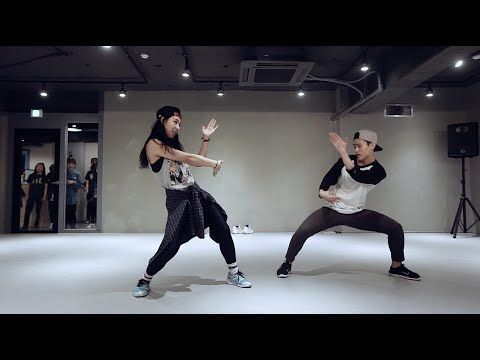 |
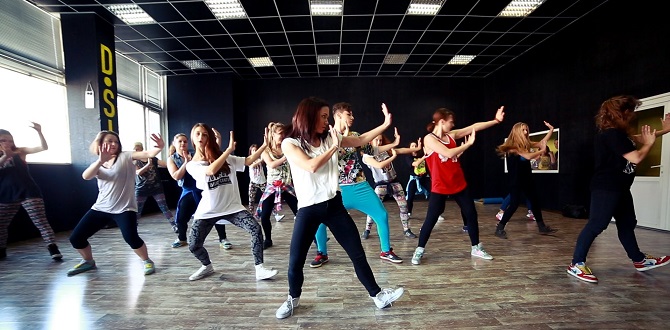 .. The princess will tell about this and something of her own, and her girls will approve everything.
.. The princess will tell about this and something of her own, and her girls will approve everything.  Daria Poselskaya pleases us with the purity and beauty of her performing skills, and also infects us with a perky mood. The number was created in 2016.
Daria Poselskaya pleases us with the purity and beauty of her performing skills, and also infects us with a perky mood. The number was created in 2016.  The number was created in 2016. Soloist of the Ensemble Evilina Stepuleva.
The number was created in 2016. Soloist of the Ensemble Evilina Stepuleva. 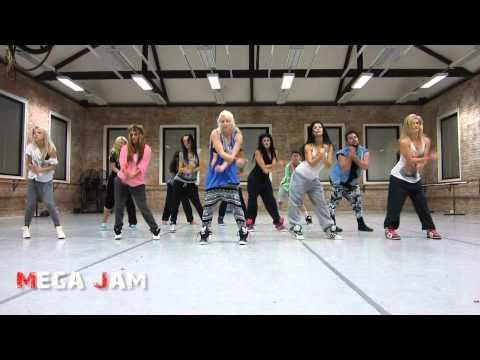 The number was born in 2015.
The number was born in 2015. 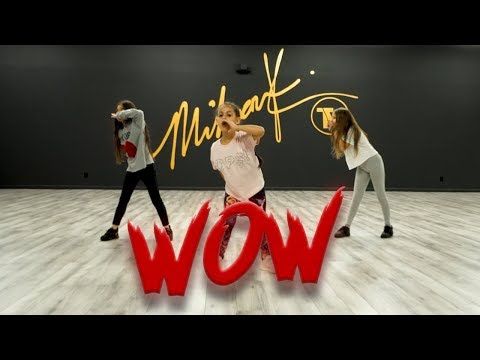 Petersburg 2015".
Petersburg 2015". 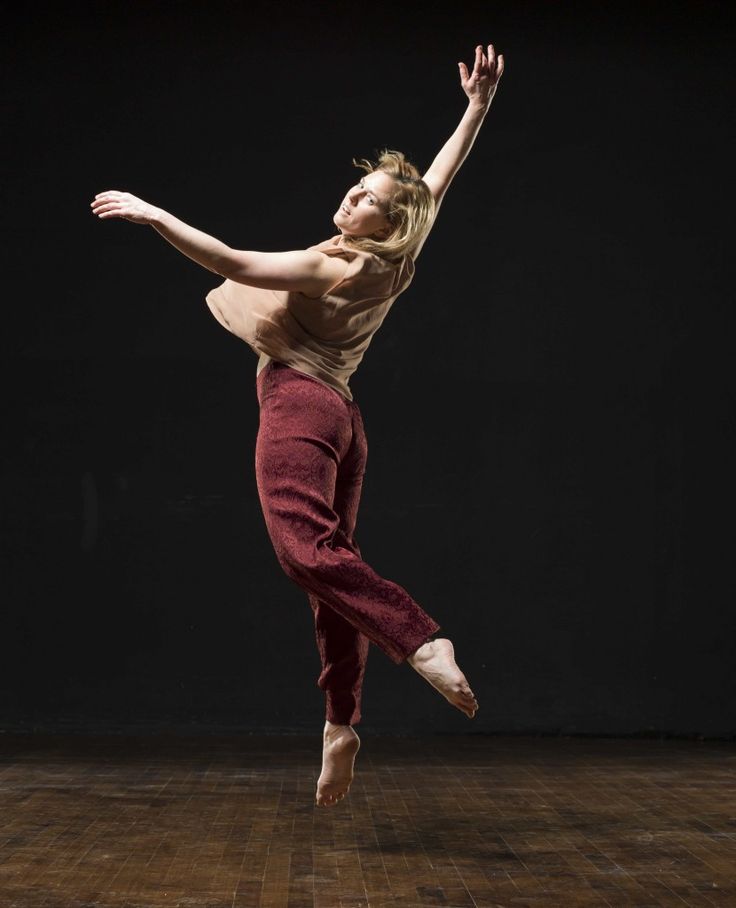 And here they are… The number is staged in the character of a Russian folk dance on a medley of folk melodies. Daria Poselskaya made her debut with this number at the city competition "Rhythms of St. Petersburg 2015" and conquered the jury. Dasha became the winner of the city competition "Rhythms of St. Petersburg 2015", laureate of the 1st degree of the VI regional competition "Dance with us", laureate of the 3rd degree of the international competition "Baltic Coast" in which Igor Kolb, soloist of the Mariinsky Theater and Yegor Druzhinin were invited to the jury.
And here they are… The number is staged in the character of a Russian folk dance on a medley of folk melodies. Daria Poselskaya made her debut with this number at the city competition "Rhythms of St. Petersburg 2015" and conquered the jury. Dasha became the winner of the city competition "Rhythms of St. Petersburg 2015", laureate of the 1st degree of the VI regional competition "Dance with us", laureate of the 3rd degree of the international competition "Baltic Coast" in which Igor Kolb, soloist of the Mariinsky Theater and Yegor Druzhinin were invited to the jury.  The room is bright and cheerful. He was highly appreciated by the jury members of various competitions and was awarded the titles of II degree laureate of the IV International Festival of Contemporary Choreographic Art "Northern Capital", laureate of the I degree of the city dance competition "Rhythms of St. Petersburg 2015", laureate of the I degree of the VI regional competition "Dance with us", the number became the winner of the creative contest "Minute of Glory".
The room is bright and cheerful. He was highly appreciated by the jury members of various competitions and was awarded the titles of II degree laureate of the IV International Festival of Contemporary Choreographic Art "Northern Capital", laureate of the I degree of the city dance competition "Rhythms of St. Petersburg 2015", laureate of the I degree of the VI regional competition "Dance with us", the number became the winner of the creative contest "Minute of Glory". 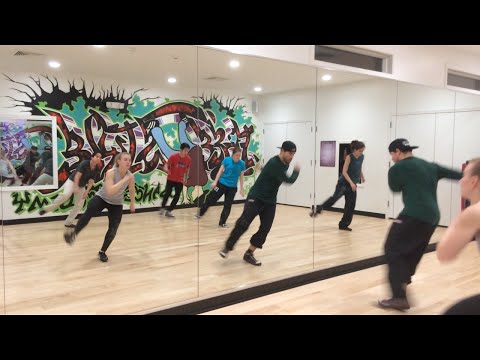 We received the titles of the II degree laureate of the international choreographic competition-festival "Petersburg Seasons", the laureate of the III degree of the inter-municipal choreographic festival-competition "Dance Confetti", the laureate of the I degree of the IV International Festival of Contemporary Choreographic Art "Northern Capital", the laureate of the I degree of the city dance competition " Rhythms of St. Petersburg 2015”.
We received the titles of the II degree laureate of the international choreographic competition-festival "Petersburg Seasons", the laureate of the III degree of the inter-municipal choreographic festival-competition "Dance Confetti", the laureate of the I degree of the IV International Festival of Contemporary Choreographic Art "Northern Capital", the laureate of the I degree of the city dance competition " Rhythms of St. Petersburg 2015”.  Petersburg 2015".
Petersburg 2015". 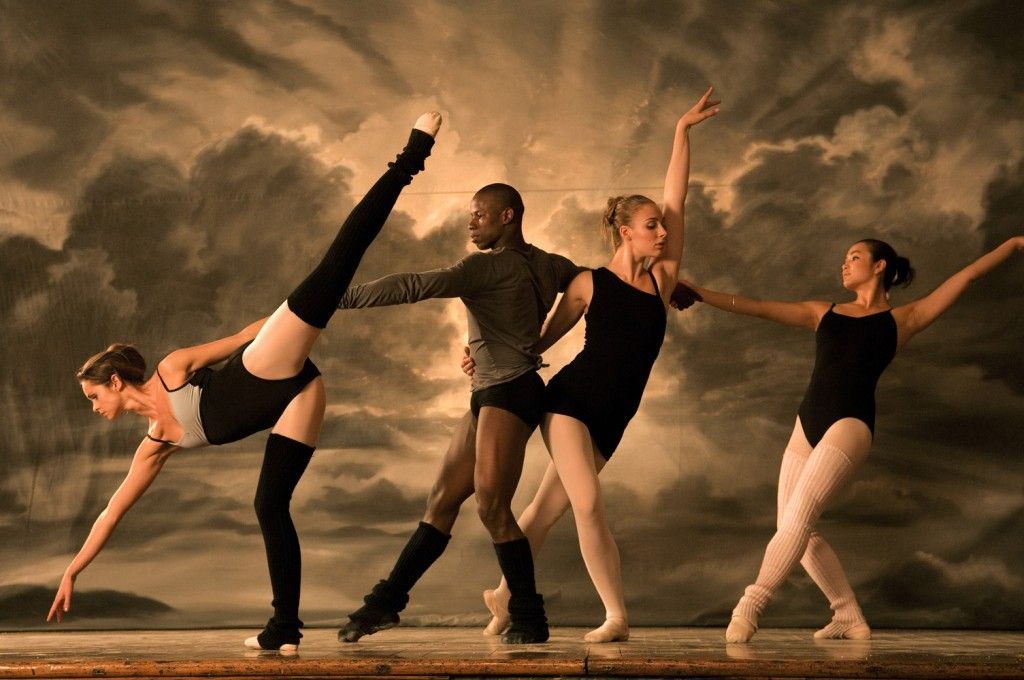 Russian dance shows the beauty of the choreographic vocabulary of the northern regions of Russia. Smoothly, slowly moving girls. Their movements are full of majestic grace and confidence. This number was delivered in 2013 and restored in 2014. year and received the title of laureate of the III degree of the VI district competition "Dance with us" and the laureate of the I degree of the city competition "Rhythms of St. Petersburg 2015".
Russian dance shows the beauty of the choreographic vocabulary of the northern regions of Russia. Smoothly, slowly moving girls. Their movements are full of majestic grace and confidence. This number was delivered in 2013 and restored in 2014. year and received the title of laureate of the III degree of the VI district competition "Dance with us" and the laureate of the I degree of the city competition "Rhythms of St. Petersburg 2015".  We thought about what kind of child Leshiy might have ... Of course, this is Leshachok! A cheerful, playful, playful kid, striving, like dad, to restore order in the forest, sometimes a very peculiar order. Our "Leshachok" is very cute and this is confirmed by the awards received in the 2014-15 academic year! At the international choreographic competition "Petersburg Seasons" laureate of the 1st degree, laureate of the 2nd degree at the interregional festival of contemporary choreographic art "ProDanceSPb", laureate of the 3rd degree at the III open intermunicipal choreographic festival-competition "Dance Confetti-20I4", laureate of the 2nd degree of the IV International Festival of Contemporary choreographic art "Northern Capital", laureate of the 1st degree of the city dance competition "Rhythms of St. Petersburg 2015", winner of the city competition "Rhythms of St. Petersburg 2015", laureate of the 3rd degree at the international competition "Baltic Coast". And all the above awards are for this academic year only.
We thought about what kind of child Leshiy might have ... Of course, this is Leshachok! A cheerful, playful, playful kid, striving, like dad, to restore order in the forest, sometimes a very peculiar order. Our "Leshachok" is very cute and this is confirmed by the awards received in the 2014-15 academic year! At the international choreographic competition "Petersburg Seasons" laureate of the 1st degree, laureate of the 2nd degree at the interregional festival of contemporary choreographic art "ProDanceSPb", laureate of the 3rd degree at the III open intermunicipal choreographic festival-competition "Dance Confetti-20I4", laureate of the 2nd degree of the IV International Festival of Contemporary choreographic art "Northern Capital", laureate of the 1st degree of the city dance competition "Rhythms of St. Petersburg 2015", winner of the city competition "Rhythms of St. Petersburg 2015", laureate of the 3rd degree at the international competition "Baltic Coast". And all the above awards are for this academic year only.
 Petersburg 2015".
Petersburg 2015".  Two frisky dragonflies merrily flutter and frolic, now freezing in place, then rapidly moving around the stage ... Music by P.I. Tchaikovsky's "The Lark" really helps the girls Daria Matinova and Yulia Korizno to flutter easily and naturally ... This number was highly appreciated at the international competition and awarded 1st place .... That's just because of the illness of one "dragonfly" the number was nominated as a solo.
Two frisky dragonflies merrily flutter and frolic, now freezing in place, then rapidly moving around the stage ... Music by P.I. Tchaikovsky's "The Lark" really helps the girls Daria Matinova and Yulia Korizno to flutter easily and naturally ... This number was highly appreciated at the international competition and awarded 1st place .... That's just because of the illness of one "dragonfly" the number was nominated as a solo.  , choreography by Victoria Zwinger.
, choreography by Victoria Zwinger. 
